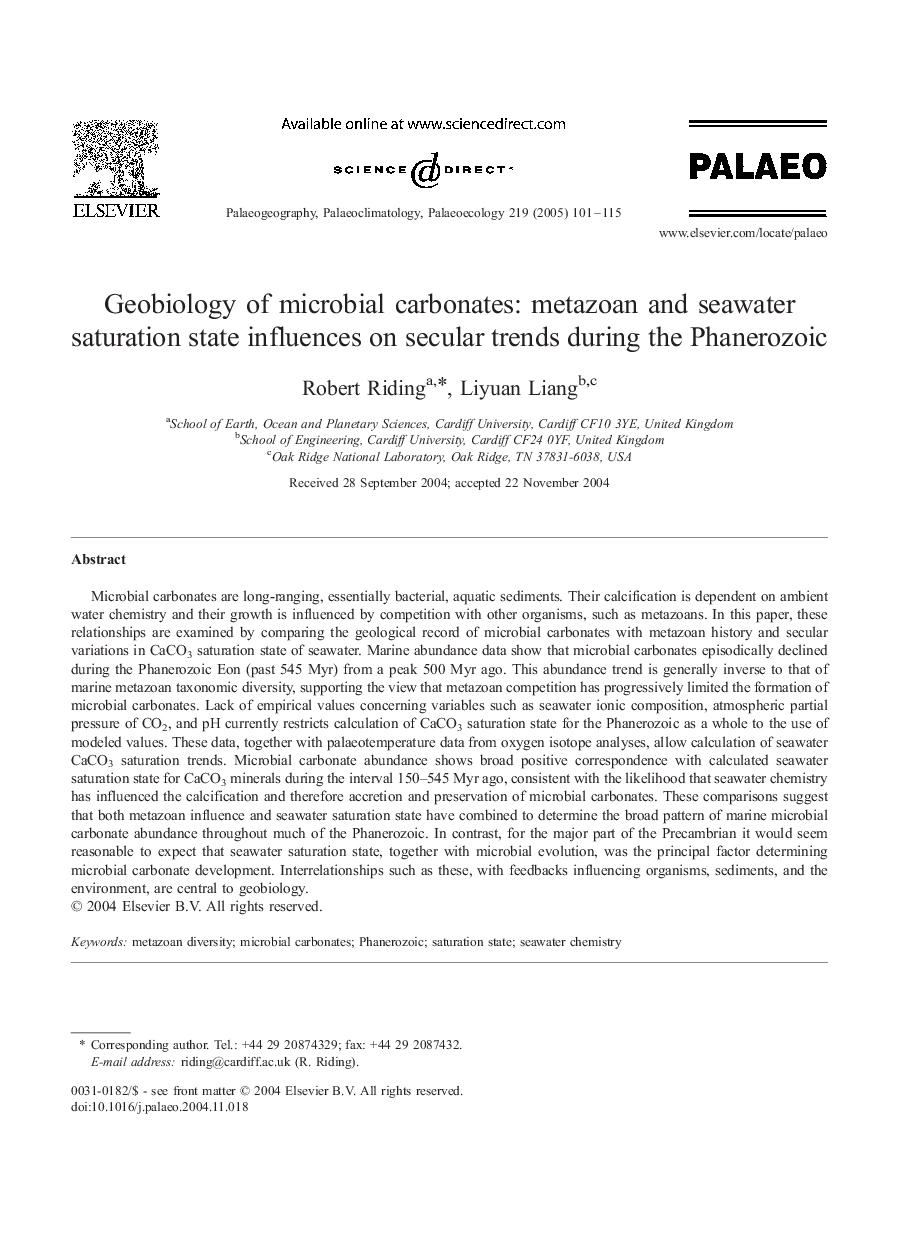| Article ID | Journal | Published Year | Pages | File Type |
|---|---|---|---|---|
| 9463136 | Palaeogeography, Palaeoclimatology, Palaeoecology | 2005 | 15 Pages |
Abstract
Microbial carbonates are long-ranging, essentially bacterial, aquatic sediments. Their calcification is dependent on ambient water chemistry and their growth is influenced by competition with other organisms, such as metazoans. In this paper, these relationships are examined by comparing the geological record of microbial carbonates with metazoan history and secular variations in CaCO3 saturation state of seawater. Marine abundance data show that microbial carbonates episodically declined during the Phanerozoic Eon (past 545 Myr) from a peak 500 Myr ago. This abundance trend is generally inverse to that of marine metazoan taxonomic diversity, supporting the view that metazoan competition has progressively limited the formation of microbial carbonates. Lack of empirical values concerning variables such as seawater ionic composition, atmospheric partial pressure of CO2, and pH currently restricts calculation of CaCO3 saturation state for the Phanerozoic as a whole to the use of modeled values. These data, together with palaeotemperature data from oxygen isotope analyses, allow calculation of seawater CaCO3 saturation trends. Microbial carbonate abundance shows broad positive correspondence with calculated seawater saturation state for CaCO3 minerals during the interval 150-545 Myr ago, consistent with the likelihood that seawater chemistry has influenced the calcification and therefore accretion and preservation of microbial carbonates. These comparisons suggest that both metazoan influence and seawater saturation state have combined to determine the broad pattern of marine microbial carbonate abundance throughout much of the Phanerozoic. In contrast, for the major part of the Precambrian it would seem reasonable to expect that seawater saturation state, together with microbial evolution, was the principal factor determining microbial carbonate development. Interrelationships such as these, with feedbacks influencing organisms, sediments, and the environment, are central to geobiology.
Related Topics
Physical Sciences and Engineering
Earth and Planetary Sciences
Earth-Surface Processes
Authors
Robert Riding, Liyuan Liang,
